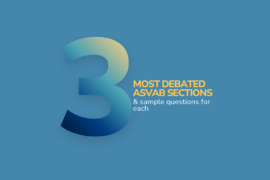As the digital landscape continues to evolve with ever-more immersive video games and apps, leaving education behind in making learning a more engaging experience would be a missed opportunity. Gamification, an increasingly popular way to entice learners, continues to grow with apps like Duolingo. Critics argue it can distract from actual learning, which begs the question: Is gamification genuinely beneficial to students, and to what extent? This article takes a balanced approach, looking at psychological studies to explore gamification’s continuing role in education.
What is Gamification in Education?
The eLearning Industry defines gamification as “the use of game design features, mechanics, and concepts in education [aimed] to produce more engaging and fun learning environments.” Some examples of gamified elements include:
- Earning Points
- Badges
- Climbing Leaderboards
- Avatars
- Performance Graphs
- Teammates
- Meaningful Stories
- Daily/Weekly Challenges
Gamification in education applies to classrooms, e-learning platforms, and workplace training. It differs from game-based learning in that gamification adds to a learning experience with the above elements. In contrast, game-based learning focuses on achieving specific objectives within a game framework.
Gamification Advantages in Education
1. Engagement and Motivation Boost
Rewards, achievements, and competition can boost learner motivation. The table below from the study, How Gamification Motivates: An Experimental Study of the Effects of Specific Game Design Elements on Psychological Need Satisfaction, provides a reference point for how certain game elements can increase engagement and motivation based on psychological needs, showing the gamified feature that supplies the need.
“Table 1. Psychological needs with matching game design elements.
| Psychological need | Mechanism | Game design element |
| Need for competence | Granular feedback | Points |
| Sustained feedback | Performance graphs | |
| Cumulative feedback | Badges | |
| Cumulative feedback | Leaderboards | |
| Need for autonomy (decision freedom) | Choices | Avatars |
| Need for autonomy (task meaningfulness) | Volitional engagement | Meaningful stories |
| Need for social relatedness | Sense of relevance | Teammates |
| Shared goal | Meaningful stories” |
Psychological needs paired with elements of gamification have the potential to keep learners intrigued and satisfied with the learning process—upping motivation and engagement rates.
2. Enhances Retention and Memory
The psychology of “rewards” in gamification can strengthen memory and retention. Feedback loops (e.g., immediate feedback on quizzes) help solidify learning by reinforcing concepts with explanations. With Peterson’s Test Prep, you’ll find explanations for answers to provide high retention of learning material.
3. Encourages Active Participation and Collaboration
Collaborative elements, such as team-based challenges, can impact social learning. Collaboration through gamification can mirror real-world problem-solving and help students feel like they belong and are a part of the problem-solving solution. In How Gamification Motivates: An Experimental Study of the Effects of Specific Game Design Elements on Psychological Need Satisfaction, researchers found that “Together with teammates, who can be real co-players or non-player characters, a sense of relevance can be evoked by emphasizing the importance of the players’ actions for the group’s performance… A shared goal, which can be conveyed within a meaningful story, can also foster experiences of social relatedness.” Thereby, collaborative elements help to contribute to a sense of belonging.
4. Provides Clear Goals and Progress Tracking
Gamification can help learners track their progress in various ways, fulfilling a psychological need for competence connected to intrinsic motivation. As discussed in the research article above, researchers found that “points provide the player with granular feedback, which can be directly connected to the actions of the player. Performance graphs visually indicate the player’s progress over time, thereby providing sustained feedback. Badges and leaderboards assess a series of player actions and provide cumulative feedback.” You will see similar models of tracking progress in Peterson’s courses so that students can understand how their study efforts influence their competency in a given subject. Overall, having clear goals and the ability to track progress leads to more significant learning outcomes.
Cons of Gamification in Learning
1. Risk of Extrinsic Motivation Over Internal Motivation
Constant rewards may make learners dependent on external validation rather than internal motivation. Intrinsic motivation often leads to higher sustained motivation. When students rely solely on extrinsic validation to complete a task, their motivation and engagement may fade once rewards diminish.
2. Potential for Competition-Induced Stress
Competition elements like leaderboards and ranks might lead to anxiety or stress for some learners. Competition might discourage collaboration and negatively affect those who do not desire to be high achievers, crafting a sense of isolation and negatively impacting the learning experience.
3. Not Always Suitable for Complex or Conceptual Learning
Some complex concepts may be oversimplified when they require deep thought and reflection to grasp fully. Gamification may detract from learning outcomes, especially in areas that benefit from a less structured approach, like creative writing, critical thinking and debate crafting, social-emotional learning, scientific research, and inquiry-based learning. Many of these areas require an open-ended, process-based approach that can be difficult to encapsulate in a gamified setting.
4. Requires Significant Time and Resources
Designing practical gamification elements requires effort, creativity, and often, funding. Gamified aspects can be challenging for schools or organizations to create, especially with limited resources. The quality and aesthetic of gamified elements matter. Based on research from the article above, “gamification can be a powerful solution to address motivational problems within learning or working contexts, as long as they are well designed and are built upon well-established implementation models.” Without significant investment in intentionally designing elements, engagement falters.
5. Concerns of Accessibility and Inclusivity
Effective gamification must include the full breadth of students, meaning that it needs to be accessible and inclusive of all students. As the eLearning Industry states in its article on gamification, “It is critical that gamified educational platforms be available to all students, especially those with impairments or limited access to technology.” Without proper accessibility and inclusivity, gamification may be detrimental to populations seeking to learn who cannot access the tools necessary for their needs and background, and thereby, ineffective for education as a whole.
Best Practices for Using Gamification Effectively
- Balance gamification elements to avoid reliance on external rewards.
- Emphasize inclusivity and promote collaborative aspects rather than focusing solely on competition.
- Use gamification as a supplemental rather than a primary teaching method.
Conclusion
Gamification in education has its advantages for learners, including increased engagement, motivation, enhanced retention of material, and improved collaboration with peers. Even still, gamification has downsides, such as reliance on extrinsic motivation with rewards, competitive stress, and the oversimplification of complex topics. When approaching subjects with more complicated mechanisms, open-ended, and process-led experiences, it may be best to forego gamification as it may detract from the learning experience. On the other hand, gamification may enhance students’ learning experience in more direct learning concepts.
Implementing gamification requires time, expertise, and resources to produce quality content that will not detract from the learning experience. Therefore, it is essential to apply gamification thoughtfully, with aesthetics, accessibility, and inclusivity in mind.
As technology progresses, it is vital to remain aware and routinely assess the benefits and consequences of its presence in the classroom and students’ lives. As new developments unfold in education and beyond, we must remain open to exploring different approaches to see what best benefits students. Gamification may be an excellent addition to the unique needs of learners. Or it may not suit learners’ unique needs, so exercising discretion in its application is wise. Either way, in education, we aim to positively impact students’ academic careers with a customizable, agile, and lifelong educational journey for all, alongside technological advances.



